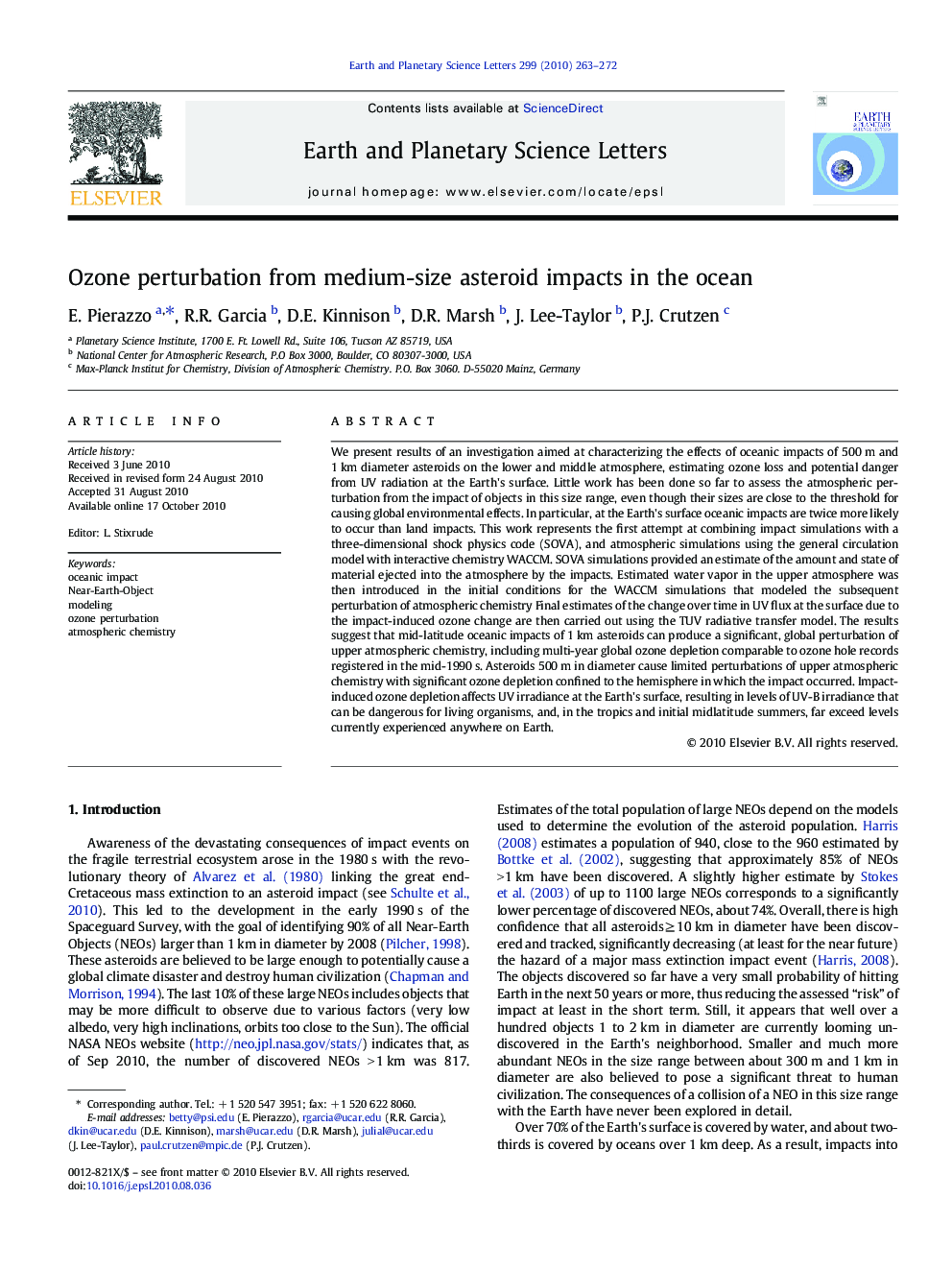| کد مقاله | کد نشریه | سال انتشار | مقاله انگلیسی | نسخه تمام متن |
|---|---|---|---|---|
| 4678297 | 1634841 | 2010 | 10 صفحه PDF | دانلود رایگان |

We present results of an investigation aimed at characterizing the effects of oceanic impacts of 500 m and 1 km diameter asteroids on the lower and middle atmosphere, estimating ozone loss and potential danger from UV radiation at the Earth's surface. Little work has been done so far to assess the atmospheric perturbation from the impact of objects in this size range, even though their sizes are close to the threshold for causing global environmental effects. In particular, at the Earth's surface oceanic impacts are twice more likely to occur than land impacts. This work represents the first attempt at combining impact simulations with a three-dimensional shock physics code (SOVA), and atmospheric simulations using the general circulation model with interactive chemistry WACCM. SOVA simulations provided an estimate of the amount and state of material ejected into the atmosphere by the impacts. Estimated water vapor in the upper atmosphere was then introduced in the initial conditions for the WACCM simulations that modeled the subsequent perturbation of atmospheric chemistry Final estimates of the change over time in UV flux at the surface due to the impact-induced ozone change are then carried out using the TUV radiative transfer model. The results suggest that mid-latitude oceanic impacts of 1 km asteroids can produce a significant, global perturbation of upper atmospheric chemistry, including multi-year global ozone depletion comparable to ozone hole records registered in the mid-1990 s. Asteroids 500 m in diameter cause limited perturbations of upper atmospheric chemistry with significant ozone depletion confined to the hemisphere in which the impact occurred. Impact-induced ozone depletion affects UV irradiance at the Earth's surface, resulting in levels of UV-B irradiance that can be dangerous for living organisms, and, in the tropics and initial midlatitude summers, far exceed levels currently experienced anywhere on Earth.
Journal: Earth and Planetary Science Letters - Volume 299, Issues 3–4, 1 November 2010, Pages 263–272